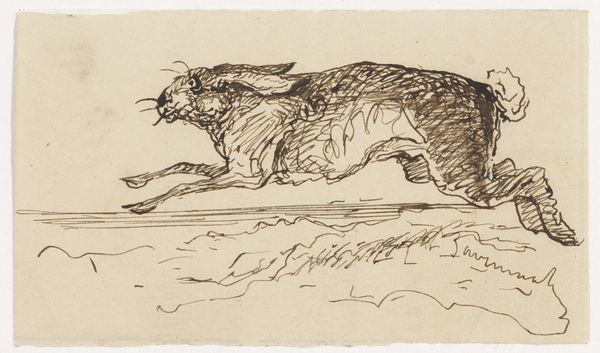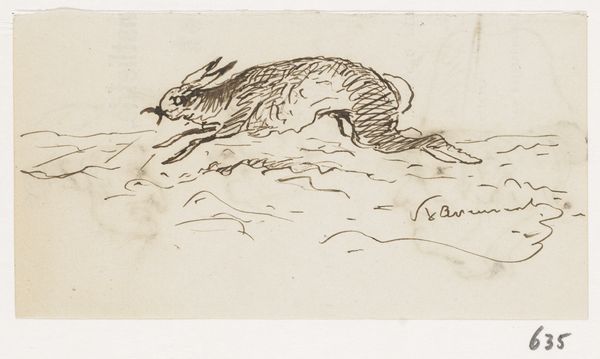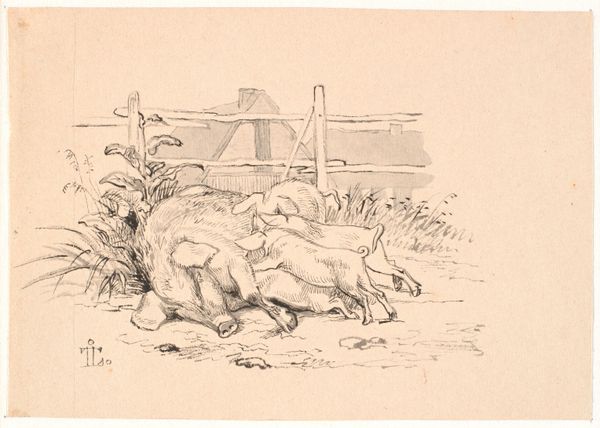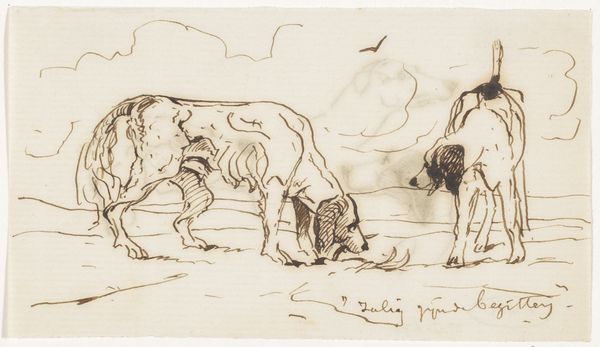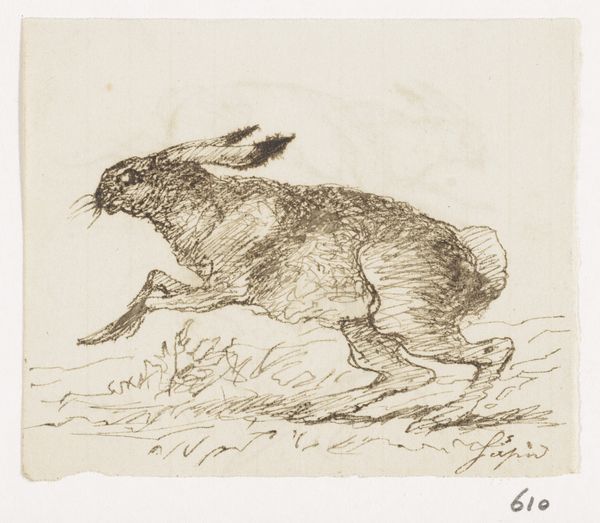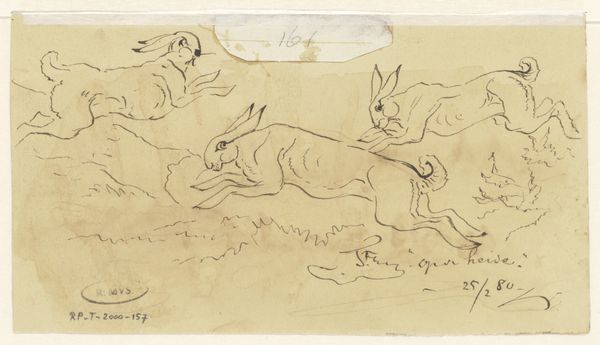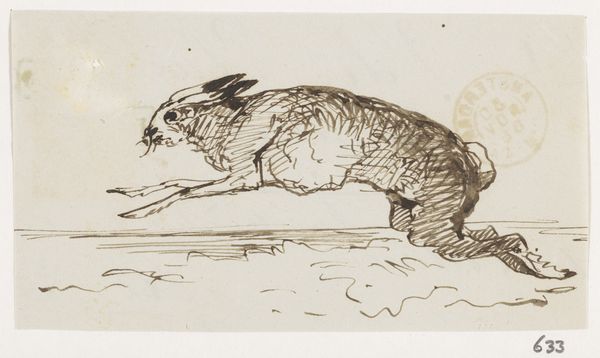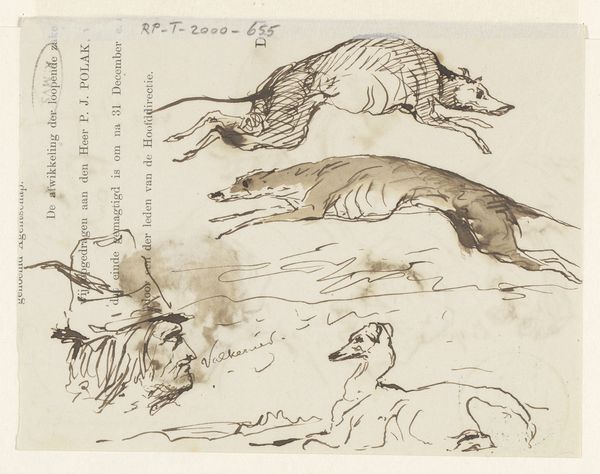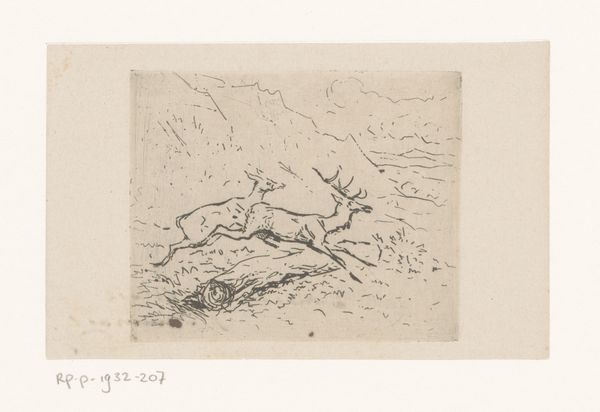
drawing, paper, ink
drawing
pen sketch
landscape
paper
form
ink
line
realism
Dimensions: height 80 mm, width 144 mm
Copyright: Rijks Museum: Open Domain
Curator: Looking at this work, "Hazen" as it’s called, a drawing made with pen and ink on paper by Johannes Tavenraat between 1840 and 1880, one immediately sees an attempt at realism in the depiction of two hares in motion. What springs to mind for you? Editor: Speed. Utter, delightful speed. One hare tearing across the landscape, the other frozen, almost comical, in its attempt to keep up. The frantic energy practically vibrates off the page, doesn’t it? It reminds me of childhood chases in fields – or at least, what I imagine those to be like, filtered through memory and wishful thinking. Curator: I’m drawn to the economy of means. Tavenraat's choice of ink and paper speaks to both accessibility and the traditions of naturalist sketching, which played a key role in developing zoology as a science. This drawing encapsulates observations about nature at the time. Editor: Observation, yes, but it's the artist's hand that truly captivates. The stark contrast between the finely rendered hare in flight and the almost abstract suggestion of the landscape. It's as if the landscape is an afterthought. An arena for this tiny drama. There's such playful asymmetry too; that torn piece of paper adds a very modern tension. Curator: The material supports your read! The uneven edges of the paper further highlight the work’s status as a study or preliminary sketch rather than a highly finished product for public display, focusing our attention to Tavenraat’s immediate process of artistic observation. Editor: You know, it also has a beautiful simplicity to it. Stripped back to essentials— line, form, movement. As if everything non-essential has been erased by wind or weather. It reminds me to pause, watch closely and let stories reveal themselves. What could be better, truly? Curator: Thinking about this sketch in the broader context of Dutch landscape art, it underscores how close observations of animals in everyday surroundings contributed towards a scientific, more objective understanding of the natural world. This ethos would eventually allow artists to engage in other pressing cultural developments through realism. Editor: It’s been so interesting seeing Tavenraat’s hare escape the confines of that landscape, reminding me to make my own impulsive leaps of faith more often! Curator: Agreed. Delving into “Hazen” has illuminated for me how simple materials can offer surprisingly detailed accounts of our history and relationship to nature.
Comments
No comments
Be the first to comment and join the conversation on the ultimate creative platform.

